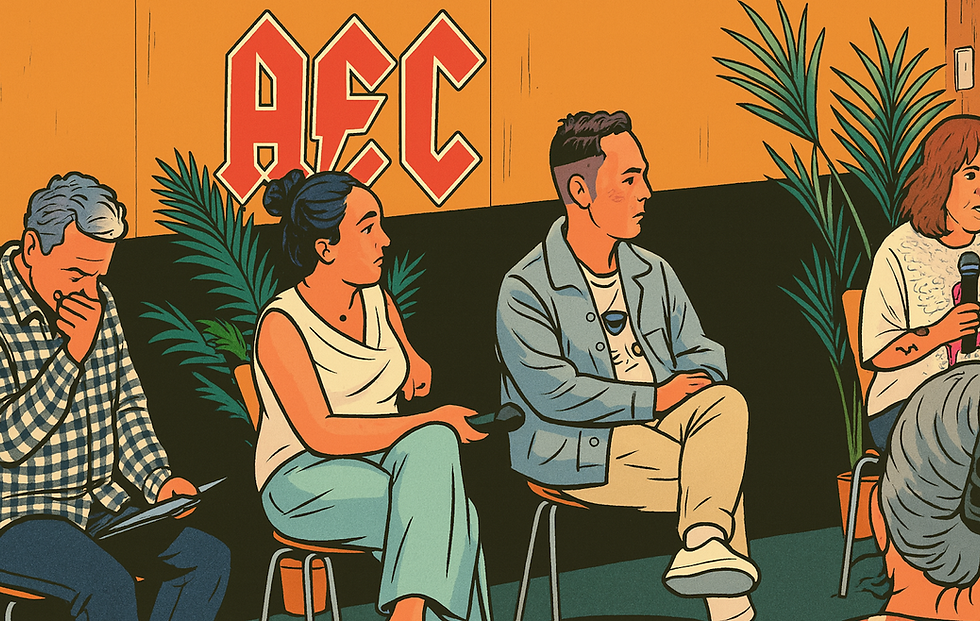A Niho Taniwha Scavenger Hunt
- Jun 30, 2023
- 3 min read
by Rebecca Thomas

Researchers spend years investigating challenges and organising their thoughts, they then share their findings with the community, but how can they increase their captive audience's engagement and move them to disrupt the system? How can they encourage Tangata Tiriti to build relationships with Tangata Whenua, to be tau (at peace) with their positioning?
Quite often I see the greatest work from the best academic minds draped on coffee tables, proudly positioned on leader’s book shelves, and tucked in staff room cubbies. On my journey from school to school I could easily play scavenger hunt or bingo over the course of the week. Every time I see a familiar cover I smile, pick it up excitedly, and thumb through the pages - but all too often it shows no signs of wear. I ask with anticipation, “Have you read it?” keen to share a kōrero with what the educator may have made of the researcher's insights - but all too often the reply is a tentative, “Not, yet.”
I also carry a range of these notable books with me on my person and wave them around in staff meetings. Teachers take photos and look curious about what the book might teach them, but the truth is the realities of the business of school take over and they rarely get time to absorb them. One of the most popular books I have seen this year on my travels is the dark blue, mesmerising cover of Niho Taniwha.
Applying the Niho Taniwha model to the book itself I’ve been trying to think of ways to help any of its readers and fans, engage, continue to engage, and move through the state of whai, ako, and mau, so that the final threshold of tipu can be a reality for both reader and researcher.
#1 Whai (enjoyment and an agreement the subject matter is important) - There is no doubt about the tremendous joy I see on the many faces all over social media gripping Niho Taniwha in their arms at workshops and events around the motu. The delicate but satisfying cover has been elegantly designed by Māia Gibbs, it draws you in. The weight, size, shape and feel of the book is unconventional, intriguing; the print and captivating photography contained within its pages make the daunting world of academia more inviting. Its purpose, the reason why you buy it, emblazoned on the front cover clearly, ‘Improving teaching and learning for ākonga Māori’, now who could disagree, that is what we desperately need in Aotearoa, it is the responsibility of Tangata Tiriti.
#2 Ako (being open to the kaupapa, the journey ahead) - Payments exchanged, commitment to read checked, engaging interface ready. Next comes the chance to immerse yourself with the subject matter with an open mind. The contents are clearly labelled and structured, it's so easy to navigate. Melanie, the author, asks key questions at the start of each chapter to engage your prior learning; she uses voices and personal experience and narrative pedagogy (kōrero) to draw you in and create empathy; she backs every word up with compelling statistics, and openly stands on the shoulders of the giants who inspired her; vulnerability. Time to learn and be open about privilege, power, racism, and bias.
#3 Mau (connections, impact and further learning) - Each page thoughtfully worded to help you make connections to the experiences of those contained within the pages; activities to help you review the impact of these words and messages on your practices; carefully constructed whakataukī to shape the purpose of the kaupapa; thoughtful reflection questions to help you plan for future learning, appropriately positioned and phrased. Mau is covered too. These connections will help us figure out our responsibilities.
The final stage is set ‘tipu’ (outcomes), your whakaaro, it can only be obtained if you pass through the other three stages. This is what the researchers have waited for, this is what drives them to share their wisdom and deliver their key notes, but frustratingly this part is also out of their hands.
It’s up to us, the reader, Tangata Tiriti, the subscriber, to complete the Niho Taniwha model. It's us that has to do the mahi from here and implement the changes. It is not enough to have the book on your shelf, or good intentions to read it when you have some time to yourself. It is the actual actions you take as a result of the mahi, the changes you make from whai, ako, and mau that will help shift the system; that will help us improve outcomes for ākonga Māori.
Next time someone asks you, 'Have you read it?' let the answer be, 'Yes,' and follow it up with an action and outcome from your journey.




Comments